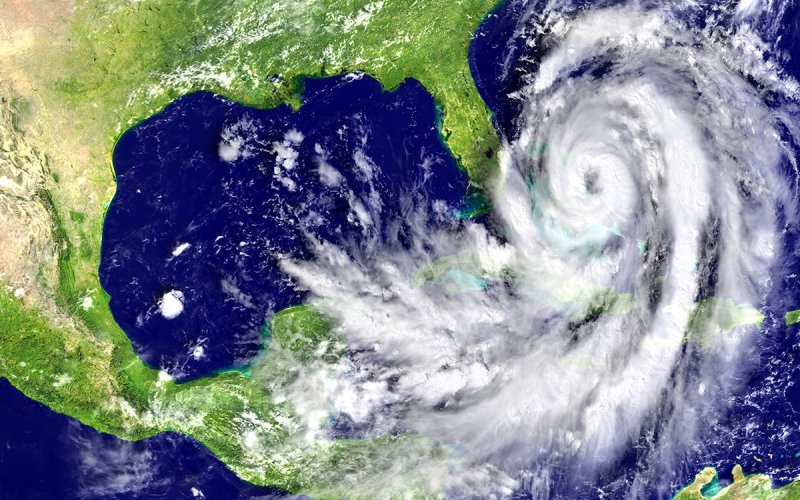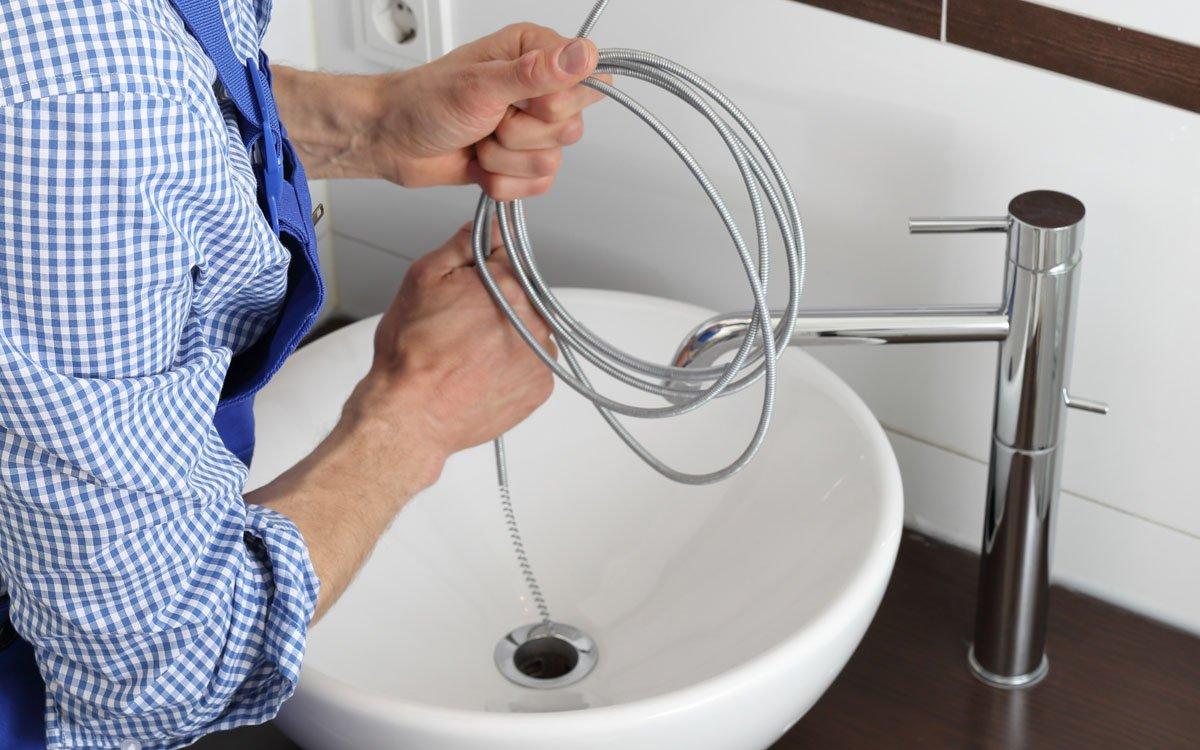Hurricane Preparedness Tips
With the hurricane season upon us, there is no time like the present to have a plan in motion. Hurricanes are one of nature’s most destructive forces and it’s time to make a plan for you and your family and prepare your home for a potential storm.
By: Sylvia Slezak | Mar 2023
 Patricia over the Pacific approaching Mexico. Elements of this image furnished by NASA
Patricia over the Pacific approaching Mexico. Elements of this image furnished by NASA
As we look at past storms, such as Superstorm Sandy in 2012 and Hurricane Ian making landfall on Florida's Gult Coast on September 28, 2022, we know that the impact of one storm can be felt for years after its destruction. The reach of Hurricane Ida, spanning nine states, proved that anyone can be in the direct path of a hurricane and in danger from the remnants of a storm system.
Hurricanes are dangerous and can happen along any U.S. coast or in any territory in the Atlantic or Pacific oceans. The seasons for these three areas are:
- Eastern Pacific Hurricane Season: May 15th through November 30th.
- Atlantic Hurricane Season: June 1st through November 30th.
- Central Pacific Hurricane Season: June 1st through November 30th.

Hurricane Matthew on the Florida coastline. Elements of image furnished by NASA.
Hurricanes can cause major damage by
- Winds that can blow up to 185 mph.
- Storm surges and heavy rains that flood streets.
- Rip currents and debris that damage and block access to power.
- Entire communities can be affected in a short period of time.
Historically, storm surge is the leading cause of hurricane-related deaths in the United States. Preparation can help you be ready to weather the elements, and put you ahead of the game just by doing basic things. Pay close attention to the media and follow the direction of local emergency officials. If they don’t tell you to evacuate, then don’t.
As we go through this year’s hurricane season, experts are warning residents to pay more attention to predictions about storm surge and flooding than about wind strength. While we don’t evacuate for wind, most people are enamored with wind and base their assessment of risk almost entirely on their perception of wind. They are looking at all the wrong things when it comes to assessing their risk.
Even if you live inland, water damage can be a huge and costly risk. Once the storm moves inland, rainfall flooding and inundation are often overlooked. Most people who die in a hurricane die by drowning. While people who live in coastal areas are at most risk, hurricanes also bring high winds and rain inland. In September 2017, Hurricane Irma caused rock slides and cut power to hundreds of thousands of customers in the mountains of North Carolina and South Carolina.
Experts predict that we are going to see more atypical tracks, more atypical strengthening, and more things that may seem strange and out of the ordinary.
According to the National Hurricane Center, Florence was the wettest tropical storm ever to hit North Carolina, dumping up to 35 inches of rain in places, with flash flooding persisting for a week. Some areas were still recovering from damage two years earlier when Hurricane Matthew caused 29 deaths in the Carolinas – all but one due to flooding.
A public information officer with Emergency Management recommends buying flood insurance, even if you don’t live in a flood zone. Storm after storm, it was evident with Hurricanes Matthew and Florence, that those with flood insurance were able to recover faster and rebuild faster than those who didn’t have it. Flood insurance is relatively inexpensive if you don’t live in a flood zone.
Various state Emergency Management officials and their colleagues at the National Hurricane Center are working on evacuation plans. If you’re away from the threat of storm surge, several miles inland, and live in a secure structure (not a mobile home), you should consider staying right where you are, unless you’re ordered to evacuate.
Over-evacuation can become an issue and is a frightening experience to go through. Before you leave, consider how difficult it will be if you leave. The traffic jams before Hurricane Irma were a harrowing experience. As hurricane experts prepare for the new season, they urge you to be ready. Stock up on items you don’t have but will need, a generator, flashlights, food, water, etc. You have to become more self-reliant and have food and supplies on hand to be 100% self-sustaining for three to five days. If you barely get through a hurricane and you need water, then you have planned poorly.
According to electric power source providers, major storm restoration requires massive coordination. They may be able to leverage thousands of resources from various jurisdictions to stage crews near affected areas and restore power faster, but that may take up to a week, depending on the storm. You should pay close attention to forecasts and the National Hurricane Center for the latest information. And if you lose power, practice patience.
A suggested way to stay ahead of the storm is to develop a plan, discuss it with family and friends, assemble an emergency kit, safeguard important documents, and sign up for emergency alerts from your local government.
You may experience periods of time where you will not have access to supermarkets, gas stations, or electricity. According to the Federal Emergency Management Agency (FEMA), your emergency kit should be equipped with the following items for you, your family, your pets, and anyone taking shelter with you.
Food and Water
Three-to-five-day supply of nonperishable, easy-to-prepare foods that you and your family will eat. Consider foods that are high in protein. If using canned items and they are not self-opening, remember to pack the non-electric, manual can opener. Be sure to add paper products and plastic utensils.
Cool your refrigerator down to the lowest temperature and keep the doors closed as much as possible. Most closed refrigerators will keep food cold for about four hours. If your power has been out longer than four hours, discard any spoiled food. If in doubt, throw it out.
Consider a three-to-five day supply of water, although some experts recommend up to a two-week supply. The Red Cross recommends one gallon of water for each person, or pet, a day. You should increase your water supply if you live in a warmer climate, care for a sick or elderly relative or are pregnant. Remember to check bottled water for expiration dates.
- Canned meat, vegetables and fruits (avoid dented, corroded, punctured, or swollen cans)
- Canned juices (avoid dented, corroded, punctured, or swollen cans)
- Powdered milk
- Dry cereal or granola
- Peanut butter
- Dried fruits
- Protein bars
- Infant food or formula, if applicable
- Pet food and treats, if applicable
- Water (one gallon/person/day for 3-5 days, preferably for 2 weeks)
Medication and medical supplies
- Prescription medication (7-day supply, laminated list of medication, include dose amounts, times, allergies and other medical facts) fill prescriptions prior to approaching storm.
- Extra oxygen or special supplies
- Respirator, generator in case of power outage
- Contact lenses, solutions, drops
- Hand sanitizer, wipes, moist towelettes
- First-aid kit, tape, gloves
- Extra hearing aid batteries
- Filter mask (or cotton T-shirt)
- Syringes, specialty supplies
Personal Care
- Cell phone with charger, additional power packs
- Radio (hand-crank radio to listen to the National Weather Service for updates)
- Battery-powered radio, extra batteries
- Flashlight, extra batteries
- Small sewing kit with extra safety pins of various sizes
- Multi-purpose tool kit with wrench/pliers
- Infant/baby supplies, if applicable (diapers, bottles, wipes, brushes, etc.)
- Spare eyeglasses, sunglasses
- Towels (cotton and paper)
- Whistle
- Emergency blanket, regular blanket, neck pillow
- Tape (strong, waterproof)
- Gloves (for protection and warmth)
- Hand soap, toothbrush, toothpaste
- Personal hygiene and incontinence products
- Extra clothes, outerwear, rain gear, comfortable footwear
- Paper goods, plates, utensils, trash bags
- Non-electric manual can opener (if applicable)
- Travel wallet/purse (wear on shoulder or waist under clothes)
- Pet supplies (collar, leash, food, carrier, bowl, plastic bags for waste)
- Insect repellent and sunscreen
- Paper, pencil/pen, books, photos, music
Stock Up and Be Prepared
- Consider buying flood insurance.
- Have a plan for where and how you will evacuate. Include your pets, if applicable.
- Get cash in case power outages prevent using ATMs.
- If elderly family members or friends rely on respirators, make sure they have a generator or an evacuation plan in case the power goes out.
- Copies of important documents kept in a waterproof container (health summary, medication list, emergency contact numbers, photo ID, birth certificates, proof of address, deed/lease to your home, social security cards, bank documents, photo albums, insurance policies) emergency contact information, photo ID (extra small IDs with care receiver and caregiver information), proof of address, deed/lease to home, social security card, passport, birth certificates and insurance policies
- Look at the latest evacuation zone maps to find your nearest available shelter.
- Remember that some shelters may not allow pets.
- Stay with a family member or a friend if possible.
- Check and adjust your kit to serve the current status of your family.
- Remove all expired items from your emergency kit.
- Test your batteries, replace dead or weak ones.
- Cover windows with shutters or plywood.
- Store outdoor furniture, toys, objects that could become projectiles.
- Download an app through your emergency management agency, or other source to receive severe weather warnings.
We encourage everyone in the community to place ultimate importance on their health and safety and follow the instructions of your local emergency management authorities. Be prepared and stay safe.
To find a flood insurance agent, or to hire a licensed professional prior to or after experiencing the damages of a hurricane, visit CityOf.com to get the services you need.
















